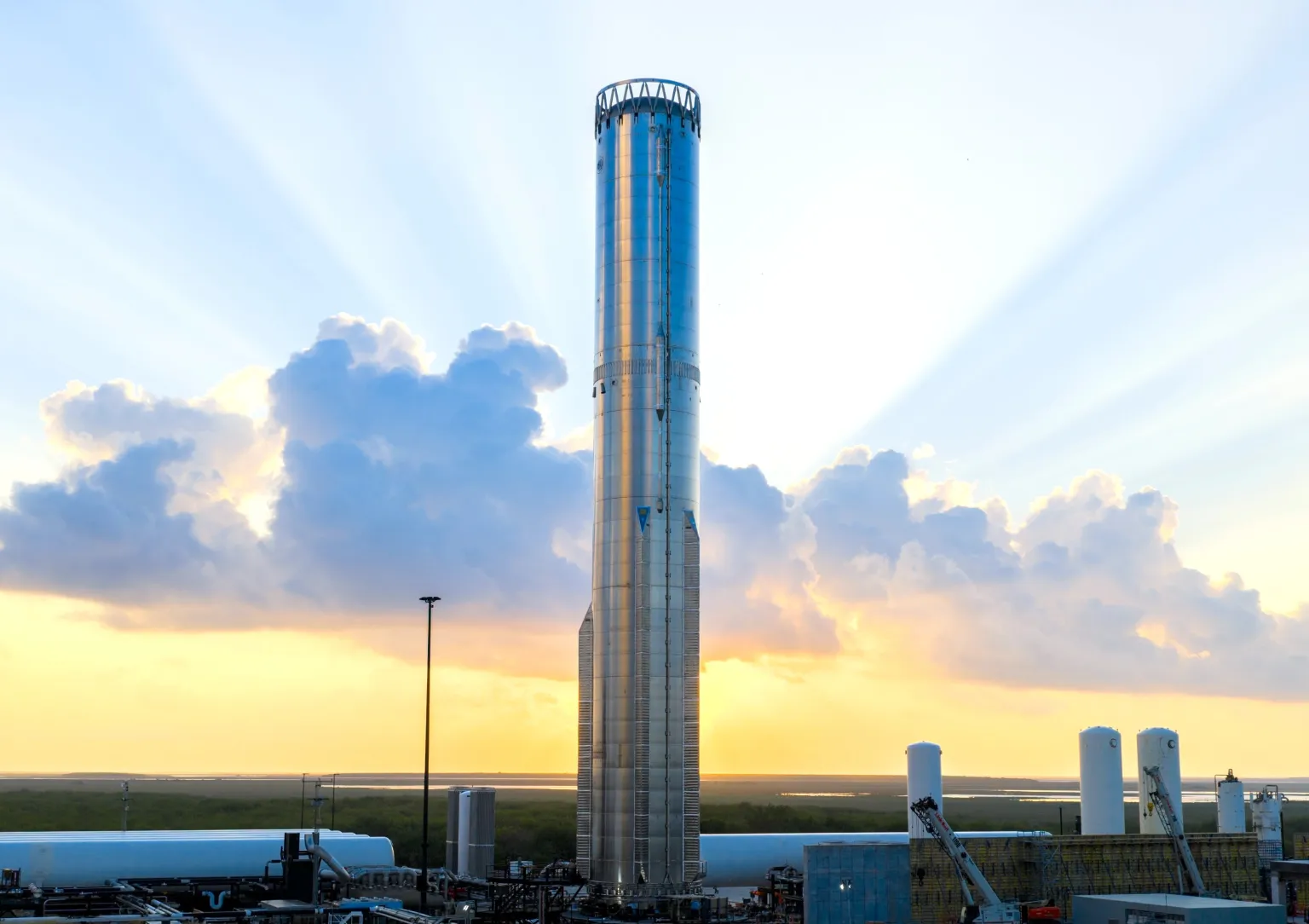SpaceX rolled out an upgraded version of its Starship rocket booster in South Texas on Thursday to begin testing, and just a few hours later, something inside the booster exploded. Livestreamers who constantly monitor SpaceX’s Starbase site captured the blast around 4:00 a.m. on Friday, and others later shared close-up photos showing the extent of the damage.
This explosion didn’t look like the typical fireball events SpaceX has experienced during previous rocket tests. Instead, it blew out an entire side of the booster’s lower section while the rest of the structure remained standing. The accident happened unusually early in the development process, and the booster didn’t even have rocket engines installed yet, according to reports from Ars Technica.
SpaceX explained on X that the team was conducting “gas system pressure testing” when the blast occurred. The company confirmed that no one was injured, as the test area had been cleared ahead of time. SpaceX added that its engineers need time to investigate the cause before sharing new details.
This booster marked the first major hardware for Starship version three, also called “V3,” a significantly upgraded design meant to be larger, more powerful, more efficient, and capable of docking with other Starships in orbit. That docking capability is essential to SpaceX’s long-term goals of reaching the moon and Mars. The company flew the last version of the V2 design in October and had already begun shifting focus to V3 development.
It’s still unclear how this explosion will affect the next steps for SpaceX. Any major delay could create setbacks across the entire Starship program. The company has set ambitious targets for 2026, including demonstrating in-orbit fuel transfer between a Starship spacecraft and a dedicated tanker version of the rocket. NASA requires that demonstration before it allows SpaceX to move forward with crewed lunar missions, which it currently expects in 2028.
Acting NASA administrator Sean Duffy has already expressed frustration over SpaceX’s slow pace and suggested NASA may consider shifting the lunar contract to Jeff Bezos’ Blue Origin if progress doesn’t improve. Meanwhile, Blue Origin has accelerated work on its own heavy-lift rocket. The company recently launched its New Glenn rocket for the second time, delivered its first commercial NASA payload, and successfully landed a New Glenn booster for the first time. On Thursday, Blue Origin revealed an even larger New Glenn design aimed directly at competing with Starship.
















